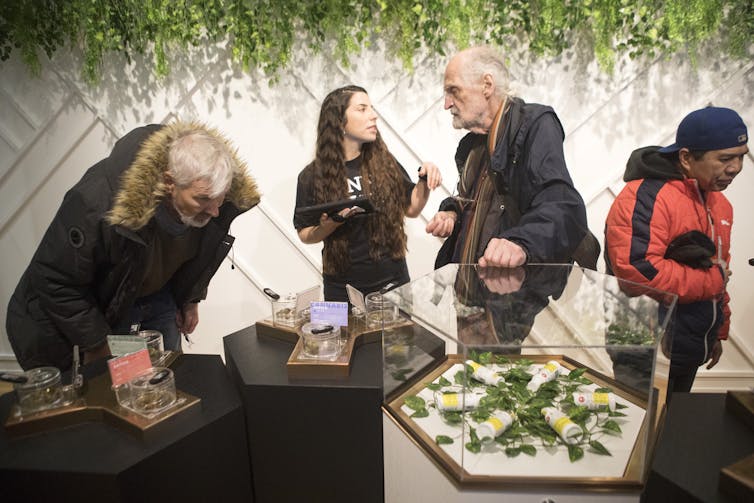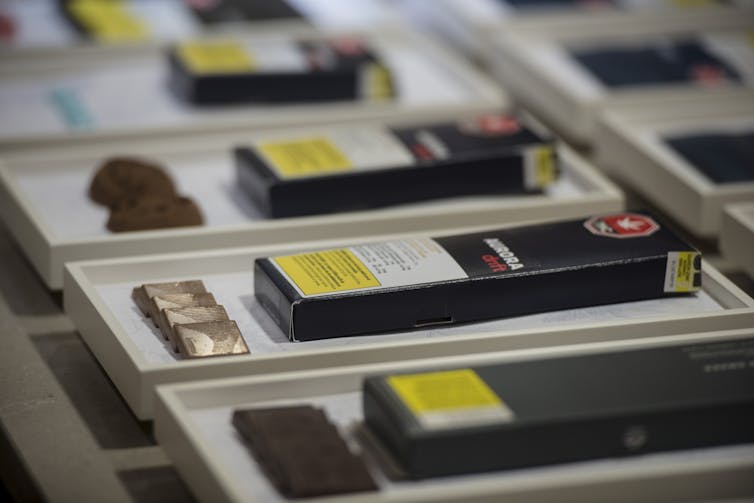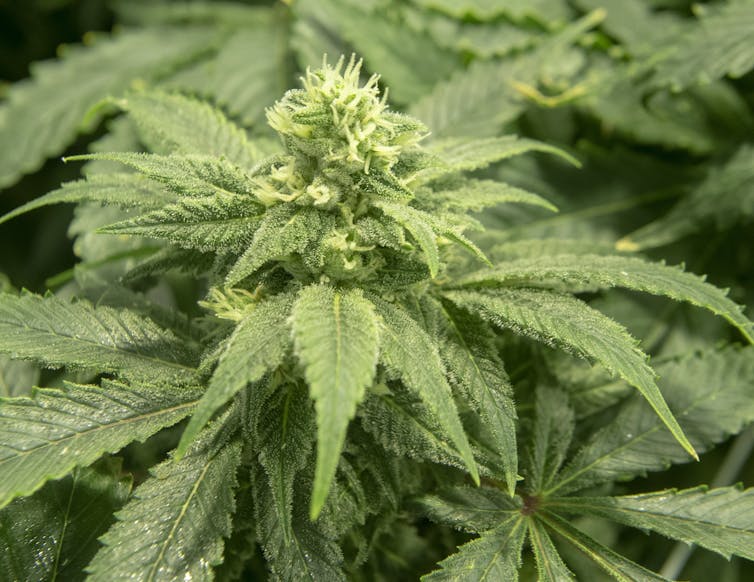The ‘entourage effect’ — what we don’t know about how cannabis works
April 30, 2025
In the years since legalization, there has been a tremendous surge in the number of cannabis products available to Canadian consumers, many offering tailored experiences to enhance seemingly any mood or activity.
Do you want something calming or uplifting? Are you looking to inspire focus, spark creativity or get a good night’s sleep? Do you prefer full-spectrum extracts or THC isolates?
But how does one plant produce so many different experiences? Like many of its botanical relatives, cannabis is rich in active compounds. The prevailing view is that these compounds work together to shape the overall experience, a phenomenon known as the “entourage effect.”
From a consumer standpoint, the idea of custom-tailored experiences guided by key active ingredients is appealing — and it certainly makes things easier. But in reality, it’s not so cut-and-dried.
Making informed decisions as a cannabis consumer can seem overwhelming, and navigating a product menu can feel like it requires a chemistry degree. But how much do we really know about how cannabis works? And how well are we able to predict individual experiences based on a product’s composition?

THE CANADIAN PRESS/Chris Young
What’s in a high?
Most research into cannabis’ effects has focused on two key compounds, Δ9-tetrahydrocannabinol (THC) and cannabidiol (CBD). CBD is non-intoxicating and thought to underlie many therapeutic effects of cannabis, whereas THC is the primary compound responsible for the classic cannabis high.
Until recently, the most pertinent information available to cannabis consumers was the THC:CBD ratio, and from a regulatory standpoint, these are the only compounds required by Health Canada for product labels. But the cannabis plant produces over 500 potentially bioactive compounds, most notably cannabinoids, terpenes and flavonoids, with increasing emphasis being placed on how they interact to drive different experiences.
The idea that the different components of cannabis work in concert, modulating one another’s activity to influence the overall experience, has been termed the “entourage effect.” Simply put, it seeks to explain the effects of cannabis beyond those of any individual component, such as THC or CBD, and offers an elegant explanation for a common question: how can products with the same amount of THC and CBD produce different effects?
Indeed, the medical cannabis community has long-favoured full- and broad-spectrum products (those containing a varied chemical profile) over single-compound isolates such as purified THC or CBD, based on claims of superior safety and efficacy.
Ask your local budtender for a recommendation and you will likely get a crash-course on terpene nomenclature, hearing words like limonene, myrcene, pinene and linalool.
While this modern embrace of terpene pharmacology and natural product chemistry reflects a growing appreciation for the complexities of the cannabis plant, claims of entourage effects remain largely speculative, highlighting how much we’ve yet to learn.

THE CANADIAN PRESS/ Tijana Martin
Sound science or smoke and mirrors?
Initially coined by scientists in Israel and Italy in study published in 1998, the term “entourage effect” described interactions among endogenous cannabinoids (THC-and CBD-like molecules produced by the human body). The idea was that some of these compounds, which are inactive on their own, could enhance or modulate the activity of others, resulting in combined effects greater than the sum of their parts.
It is important to note that this study did not examine plant-derived cannabinoids found in the cannabis plant, but rather structurally related compounds produced naturally in the brain and body. As such, the idea of cannabis-specific entourage effects did not emerge directly from the data itself, but from broader inferences drawn from that research that provided a rationale for the diverse effects often reported by cannabis users.
Since then, and despite a lack of supporting evidence, the term has been widely adopted and adapted by the cannabis industry, often leveraged to differentiate products in an overly crowded market.
The available support for entourage effects in humans is limited to a few small clinical and observational studies and meta-analyses that suggest whole-plant extracts may outperform isolates for conditions like chronic pain and pediatric epilepsy.
However, these studies often use non-standardized extracts and are therefore unable to identify which chemical interactions are driving the effects. Further, direct comparisons of full-spectrum and isolate products are lacking, with most claims rooted in inferences made from pre-clinical (in other words, non-human) research and from studies of non-cannabis derived phytomolecules.
That said, the entourage effect is a valid hypothesis and arguably the most promising in terms of explaining cannabis’s varied and nuanced effects. Similar effects have been described for other drug classes, though these interactions are often termed synergism and potentiation and typically involve just a few well-characterized compounds. In contrast, unlocking cannabis synergy requires untangling the interactions of hundreds of different molecules, many of which are still poorly understood.
That complexity is what I’ve spent my career trying to understand. Researching how cannabis-derived compounds work in the brain and body, I have gained a considerable appreciation for how far our understanding of cannabis has come, how much we have still yet to uncover and how easy it is for enthusiasm to outpace evidence.

THE CANADIAN PRESS/Ryan Remiorz
Reading between the product lines
As the cannabis industry continues to evolve, consumers need to approach product claims with a healthy dose of skepticism. There is no doubt the cannabis plant is a treasure trove of unexplored and underexplored bioactive molecules, and that we will continue to uncover interesting and unexpected interactions among them. But we are far from a complete picture.
At present, the entourage effect remains a hypothesis more often co-opted for marketing than grounded in evidence. That doesn’t mean it’s wrong, but it does mean we should resist conflating convenient narratives with established science. This highlights an important question: where does the onus of responsibility for generating this new knowledge fall?
If the cannabis industry continues invoking the entourage effect for marketing and product differentiation, then it should support and contribute to research that furthers the state of evidence.
Relying solely on existing pre-clinical and academic studies in lieu of directly advancing the science and validating real-world product claims risks perpetuating hype at the expense of credibility. But industry is not alone in their duty. Government must also remedy the regulatory bottlenecks that impede new research.
Establishing a credible, science-backed cannabis marketplace means moving beyond hype. It requires action, from industry and government, to generate the information consumers need to make informed decisions.
Search
RECENT PRESS RELEASES
Related Post


